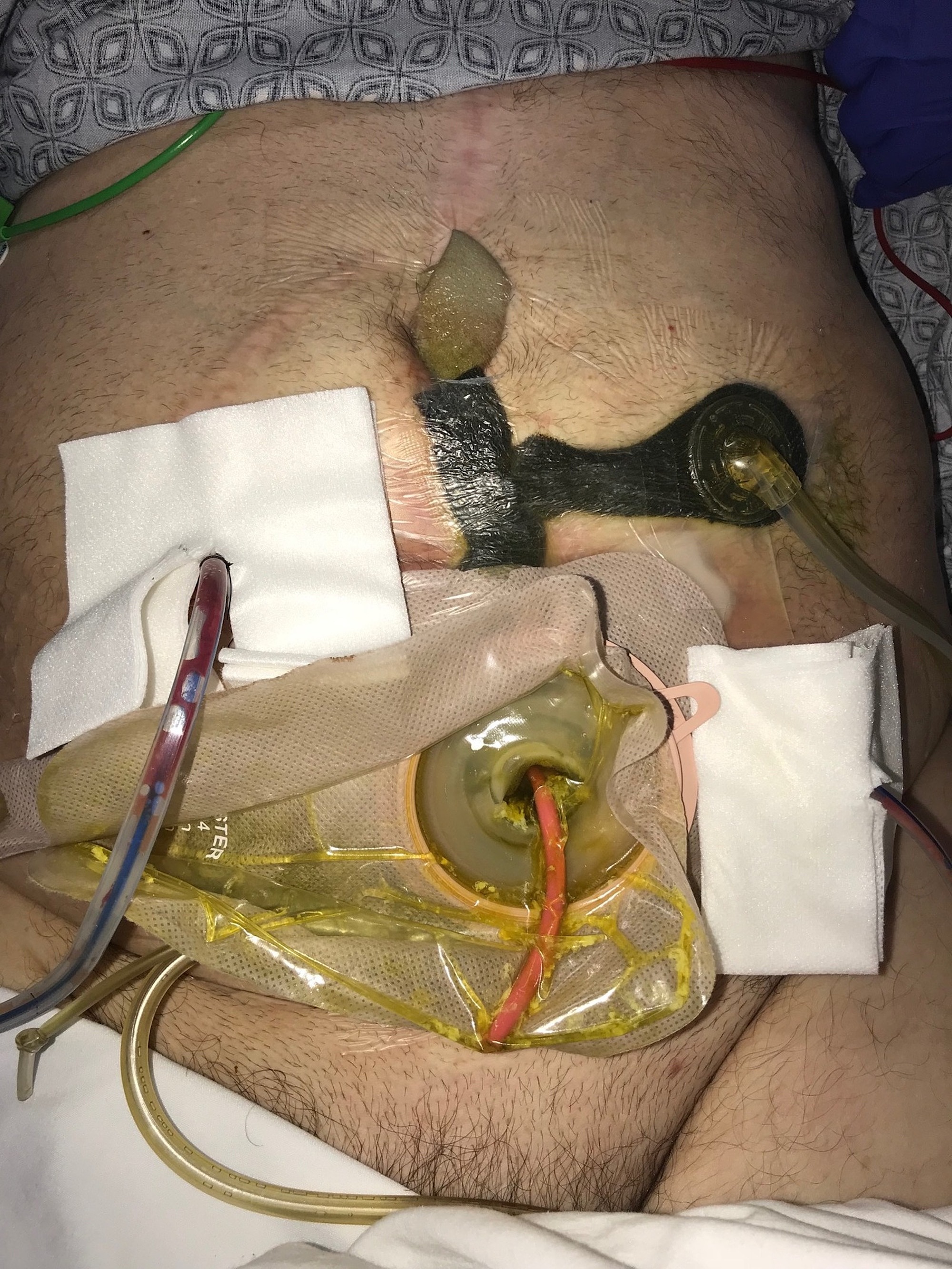

Over the course of 70 days, 20 dressing changes were performed, and continuous negative pressure of 120 mm Hg was maintained.

With each vacuum dressing change and saline cleaning, which occurred every 3.5 days on average based on the amount of secretion drainage, the investigators noticed increases in granulation tissue and reduction in bone exposure. However, a large amount of discharge remained in the anterior compartment of the leg. The first dressing change occurred after 3 days, and the wound showed significant improvement. The wound was thoroughly cleaned using saline and physicians implanted a Renesys Smith Nephew dressing with negative pressure at 120 mm Hg. The injury was severe enough that several tendons and muscles in the dorsum of the foot and leg were resected, leaving bone exposure. The patient underwent debridement of the right lower limb, and a large amount of necrotic tissue and purulent secretion was removed. Doctors performed vascular surgery to assess the extent of the wound and vascularization of the right lower limb, determining that palpation of the distal pulses was not possible. Upon admission, the patient was administered intravenous antibiotic therapy once daily.

After 7 days without a satisfactory wound response, the patient experienced increased necrosis on the leg, a foul odor, pain, edema, and purulent secretion discharge and was referred to the hospital. The patient also experienced fever, chills, and pain in the lower limb. The wound worsened with hyperemia in the instep and produced discharge of purulent secretion from the side of the foot. The patient was obese, sedentary, and dyslipidemic upon hospital presentation. The investigators analyzed the results of applying NPWT to a 40-year-old male patient with type 2 diabetes who presented at the Department of Surgery and Anatomy at University of São Paulo in Ribeirão Preto, Brazil, with plantar perforating disease on his right side, which was not treated by a specialist. Research has demonstrated that NPWT is a promising treatment method for complex diabetic foot wounds, especially for chronic wounds, and may be effective when used as an adjuvant treatment for temporary closure and preparation for wound beds prior to surgery. NPWT, a wound treatment used for open wounds since the 1940s, involves a vacuum-sealed drain and vacuum-sealed closure to create a localized controlled negative pressure environment for a wound. Ulcers caused by diabetic foot occur in 4% to 10% of patients with diabetes and can lead to limb amputations if left untreated. NPWT has also been shown to aid patients with foot ulcers in achieving complete ulcer closure better than advanced moist wound therapy.ĭiabetic foot is a common chronic complication associated with type 2 diabetes. The report lends further support to previously published research that has shown NPWT to be effective at decreasing healing time, reducing ulcer area, and increasing healing rates of ulcers. A patient who received negative pressure wound therapy (NPWT) after undergoing surgical debridement for a diabetic wound saw improvements in healing capabilities and reduced risks of limb amputation, according to a recent case report published in SAGE Open Medical Case Reports.


 0 kommentar(er)
0 kommentar(er)
